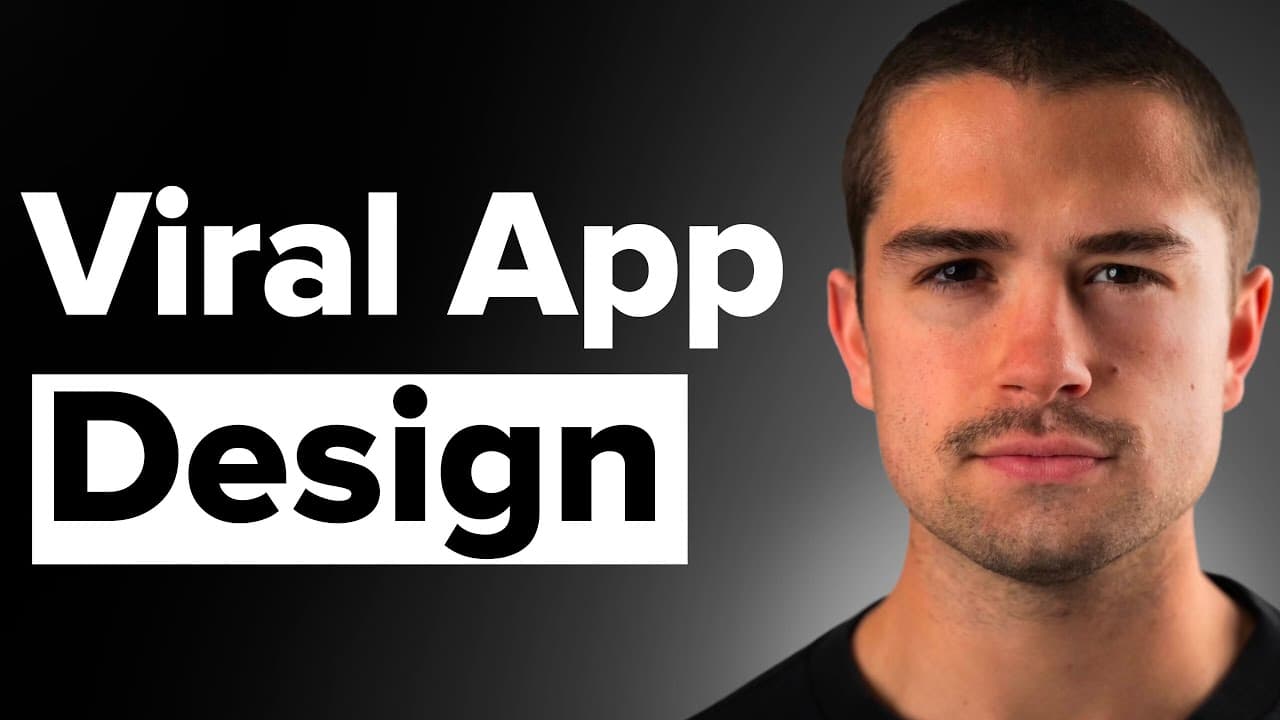So, how do you design a viral app?
My name is Blake Anderson, and in one year, I built three viral apps — RizzGPT, Umax, and Cal AI — that each generated millions in profit. I’m sharing my exact process in this five-part series (if you missed part one, check it out here). My mission is to create high-quality tools and content to improve your health, success, and purpose in life. All of the apps I made center around that.
Now, let’s get into designing a viral app.
The objective of viral app design
At its core, viral app design minimizes the friction of design and user experience to millions of users. These apps are commonly focused on single-player utilities that solve problems in simple ways. They don't require complex features or social tie-ins.
Design is critical for apps like this, because it builds on your idea and sets the stage for development and marketing. Basically, it informs the rest of the process up to release.
For example, most of Umax’s success came from the design of one single screen. The end result was simple, but there was a lot of thought that went into getting it to that point. Let’s break this design flow down into principles and methods.
Principle #1: Minimize cognitive load
Every tap, decision, and moment of confusion hinders your app’s growth. You have to minimize (or eliminate) them. The less your users have to think, the more likely they are to find value. Here's some concrete examples from my own apps:
RizzGPT: Two buttons — upload a screenshot and get pickup lines.
Umax: One button — scan your face.
Cal AI: One button — analyze your food.
These apps have one or two core actions that immediately get the user to the benefits they are after.
Your app doesn’t need every feature imaginable; it just needs to do one thing well. Apply the Pareto principle: 80% of your app’s functionality will come from 20% of its features.
Try to launch with that 20%.
Principle #2: Don’t reinvent the wheel
Use standard design practices. Successful apps have already figured out things like where the settings button should go. Fighting against these expectations creates friction. Instead, save your innovation for solving the core problem, not nitpicking particular design choices.
Again, with Umax, the six-factor rating system drew inspiration from FIFA and Madden player ratings. It was instantly recognizable to the demographic. If your app’s functionality is unique, you don’t need to differentiate in design.
Principle #3: Think like your customer
Design for real users, not imaginary ones. To understand users, you'll have to immerse yourself in their world. For Cal AI, I used calorie trackers, like MyFitnessPal, to learn what people wanted. What was working well, where did it fall short? And with Umax, I joined forums and communities to understand the "looks-maxing" culture.
Before I started on design for my apps, I became their target customer. You should try to do the same.
This isn’t just about market research; it’s about seeing your app through your users’ eyes. Apps that go viral are built by people who deeply understand their audience — full stop.
With those core principles in mind, let's finish by detailing methods for how to design these types of apps.
Method #1: Learn Figma
Figma is the industry standard for app design. It'll save you tons of time, and it's a great tool to design an app. Here’s how to get started with it in two steps:
Watch a one-hour basic Figma tutorial on YouTube.
Then, redesign an existing app’s interface using it.
You can easily over-complicate this step by getting in the weeds with in-depth courses, documentation or similar resources. While those can be helpful, simply learning the basics and applying what you've learned by redesigning an app is more than enough to get going.
The goal isn’t to become a professional designer, the goal is to quickly turn your ideas into tangible designs. Prioritize user experience (UX) over user interface (UI). This is where a lot of developers get stuck, especially in terms of how much time it'll take to ultimately ship your app.
Method #2: Create an idea board
An idea board is a collection of screenshots from apps with similar functionality. Use it to look for patterns in onboarding, settings, homepages, and more. Tools like Mobbin make it easy to gather these references. The tool isn't as important as what it does — put inspiration from similar apps into one, easily referenced spot.
Having these references at the ready means you can find inspiration quickly during the design phase. This is crucial, and ties into principle #2 (don't redesign the wheel). This step is simple, but it's incredibly important.
Method #3: Study the content
Study content that goes viral in your app’s niche. For example, Umax’s design was inspired by Madden-style rating screens, while RizzGPT’s screens fit seamlessly into viral TikTok slideshow trends. I found both of these by diving into my target customer's social media behaviors.
Understanding what people want to see and how your app can integrate that into social media is essential. Dedicate social media accounts specicially made to consume content in your app’s niche. Use what you find to inform your designs.
Wrapping up
Designing a viral app means minimizing cognitive load, sticking to standard practices, and understanding your users deeply. Use tools like Figma, create idea boards, and study viral content to refine your design. None of these steps are complicated, but each one has an important role to play when it comes to viral app design.
Stay tuned for Part 3 of this series, where I’ll discuss how to build your viral app.

